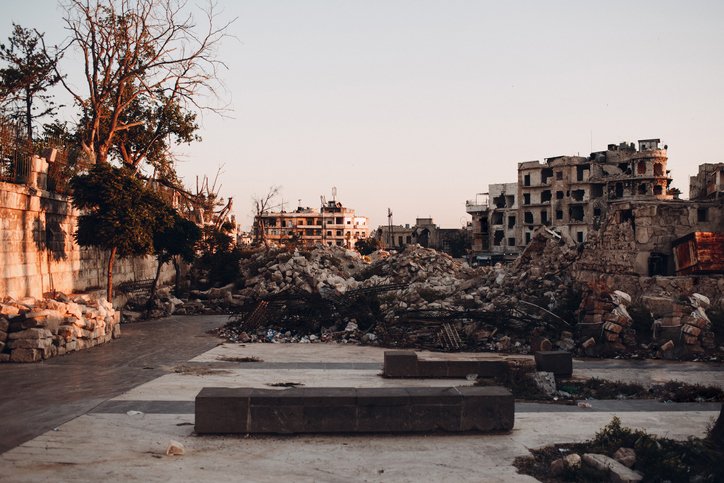War injuries – more than just the bullet wounds

Hearing the word ‘war injury’, one might think of bullet wounds, torn off limbs or burns from explosions. And whilst injuries such as these certainly feature in the palette of suffering that war brings, the reality is more complex, and to some extent perhaps also less cinematic.
The fact that a war-torn society must still cope with the burden of non-combat related injuries and diseases does sometimes not get the same attention. At the same time, war restricts access to health care and medical staff’s ability to carry out their work. In order to effectively assist war-torn societies, it is important to understand the complex challenges their health systems face, and to be mindful to listen, make connections and then act, in order to look beyond the mainstream idea of ‘war injuries’.
The fact that war and armed conflict injure, and kill, is no surprise. What might be more surprising, or at least less discussed, are the many ways in which war and conflict has an indirect impact on health of people living in affected areas. A study from 2020 that looked at the impact of armed conflict on indirect deaths, (i.e. people who were not killed as a direct consequence of acts of war, but as an indirect impact on mortality), found that armed conflict was positively associated with an increase in the death rate across age groups from both communicable and non-communicable diseases, as well as maternal, neonatal and nutritional diseases, and non-combat associated injuries.
A war is a health crisis in several complex ways. It causes new injuries, which strains the health care system, but more than that, it disrupts and destroys supply lines and ongoing health initiatives, such as vaccine programs. Although protected in international laws, hospitals and health care facilities are attacked and destroyed in recent and ongoing conflicts, severely hindering health care professionals to carry out their work.
Various groups at KI works with the impact of war on health. Among those are the Centre for Health Crises and the Centre for Research on Health Care in Disasters. Several members of staff affiliated with these two centres have worked in Ukraine, following the outbreak of the war there. A war that, according to the World Health Organization Director General Tedros Adhanom Ghebreyesus “is having devastating consequences for the health of Ukraine’s people ... that will reverberate for years or decades to come”.

War brings new illnesses and injuries, but existing ones also remain
Martina Gustavsson is a nurse who is currently doing her PhD on moral stress among health care personnel in disasters, at the Centre for Research on Health Care in Disasters. During April and May she worked as a nurse and medical coordinator in an EMT (Emergency Medical Team) in Poltava, Ukraine. This EMT supported the existing health care system by providing primary health care via mobile clinics to internally displaced people.
“Several times we needed to change and adapt the data reporting system that is normally used (in sudden onset disasters) because the patients that we saw needed assistance related to health issues such as hypertension, diabetes, asthma, and muscular ache. The latter one was often a sign of traumatic stress, which is quite a normal reaction to the things that these patients had gone through", she says.
Moreover, it is important to remember that not all countries affected by war are the same. Some, like Ukraine, already had, and continues to have, a functioning health care system, with no need as such for outsiders to come in and re-invent the wheel, whereas other war-torn countries might have much weaker health system to start with. Henrik Jörnvall, anaesthesiologist affiliated with the Centre for Health Care in Disasters saw examples of this when he worked in Ukraine for Doctors Without Borders.
Just like a war does not replace, or negate, already existing illnesses and injuries, it also brings with it health issues that are perhaps sometimes forgotten about, or less discussed, such as mental health trauma and outbreaks of infectious diseases. Moreover, war has unique effects on particularly vulnerable groups, such as children, a matter that was recently discussed in an article in the British Journal of General Practice, which looked in particular at the impact of the war in Ukraine on children’s health.

Fragmentation of research limits understanding
Anneli Eriksson, research specialist at the Centre for Health Care in Disasters, who currently works with the research project Societies at Risk, that aims to take a holistic approach to the study of how societies are affected by war and armed conflict, says:
“the full scale of conflicts’ impact remains unknown, however, and fragmentation of research into multiple academic fields limits our understanding, which is why this research project that involves several universities and fields of research is very important”.
In other words, there are direct consequences of warfare: people being wounded and killed by bullets, bombs and shrapnel and all other harm that comes as a direct consequence of the armed combat, and they are devastating. But the health consequences are so much more: over-strained and non-accessible health care, food shortage, displacement, crowding, lack of clean water, leading to a deterioration of chronic diseases as well as maternal and child health, to outbreaks of infectious diseases, malnutrition, mental and psychosocial trauma, and much, much more. Armed conflict has long-lasting effects, and the effects vary from group to group in a society, and from society to society. All in all, these indirect effects might be less visible, but it is no less vital to understand them in order to make sure that they are not forgotten about, and that aid and support goes to where it is needed the most.
